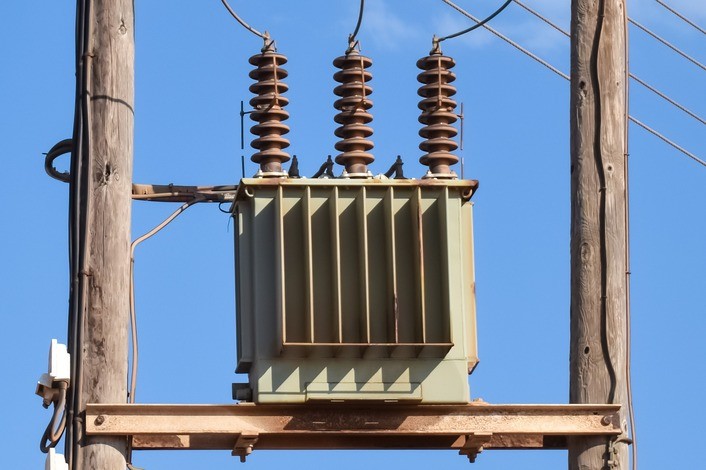The Difference Between Power and Distribution Transformers

Transformers are primarily used to change voltages to serve different functions within the electrical system. Two types of transformers include power transformers and distribution transformers. Several distinct characteristics separate power transformers from distribution transformers, with the main differences dependent on specific features like the type of network used, location of installation, and voltage capacity.
What is a Power Transformer?
Fundamentally, a power transformer performs the function of power transmission and receiving purposes. Subsequently, a power transformer’s voltage ratio varies between 756kV to 11kV. When compared to distribution transformers, a power transformer will often have a higher MVA rating.
What is a Distribution Transformer?
Unlike a power transformer, distribution transformers serve for circulation purposes. Such equipment will, therefore, bring down (step down) the voltage and incidental level of a power transmission line to a predetermined scale. This predefined level is also referred to as the end-user safety level, either for domestic consumers or for industrial purposes.
Though similar in stature to a power transformer, a distribution transformer's voltage range varies between 33kV to 430V.
What are the Differences/Uses of Each Type?
- Power transformers are utilized in transmission networks with significantly higher voltage, while distribution transformers function in distribution networks defined by lower voltages.
- Power transformers available in the market have various ratings ranging from 400kV, 200kV, 66kV, and 33kV. Whereas distribution transformers ratings range from 11kV, 6.6kV, 3.3kV, 440v, and 230 volts.
- Primarily, power transformers operate on full load rating with minimal load fluctuations. Distribution transformers function at a significantly lower load. The variation in the loads varies substantially.
- The power distributors design takes into account maximum efficiency (100%), computed using the ratio of power output/input. Distribution transformers will have a maximum efficiency variance range of between 50%-70%, calculated based on All Day Efficiency.
- Power transformers are a common feature in power generation stations and transmission substations. Meanwhile, the installation of distribution transformers is mainly in distribution stations, from this point, power is distributed for industrial or domestic purposes.
- Power transformers are considerably larger in comparison to distribution transformers.
Ultimately, despite the listed differences, one thing both power and distribution transformers share in common is their susceptibility to critters, potentially resulting in undesired power interruptions and outages. Fortunately, Critter Guard’s Line Guard and Pole Guard systems are designed to help protect power lines, substations, and transformers against animal intruders.
To learn more about our products and how they can help keep your power running smoothly, contact us today.
- Choosing a selection results in a full page refresh.


